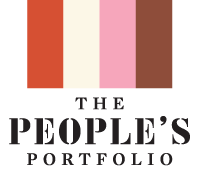The People’s Portfolio creates dynamic visual advocacy for human rights that:
- Frames human rights defenders as authoritative leaders with stature and introduces these leaders to media gatekeepers
- Enhances the capacity of policy-focused human rights NGOs to reach mainstream audiences with dynamic storytelling
- Propels important issue advocacy into mainstream media at key moments
The People’s Portfolio emerged as a result of projects undertaken by acclaimed photographer Platon to address the malaria crisis (with the UN Foundation) and human rights abuses in Burma, Egypt, and Russia (with Human Rights Watch). The success of these projects led the People’s Portfolio to become an independent nonprofit in 2013 to replicate and expand its innovative strategy to disrupt the media’s approach to covering critical human rights issues.
The People's Portfolio believes that media coverage of human rights advocacy has lacked a key component for success in mobilizing people to care about and act on urgent issues. In some cases, this exists because those experiencing human rights abuse are presented solely as victims. Perpetrators, international leaders, academics and western NGO advocates are viewed as the experts, while those directly affected by conflicts are rarely given agency or a voice. All over the world, people affected by abuse are forming movements for change from within their communities. Yet the leadership of these movements is not at the decision-making table or provided the opportunity to influence policy.
The People's Portfolio is seeking to change the dynamic on who is considered powerful by creating portraits and portfolios of the people affected by human rights violations, that also tell stories about the issues they face. In addition, our ability to partner with high level media organizations introduces defenders to the media gatekeepers whose coverage shapes the framing of issues. Such work provides human rights defenders with the stature, attention and protection they need to connect with supporters and influence policy making.
Our Impact
- SEXUAL VIOLENCE IN THE CONGO - Platon’s portrait of Dr. Denis Mukwege, an African doctor who founded a hospital to treat women who have been raped in the Congo, is featured in the Center for Civil and Human Rights and in the Time 100, amplifying his message on justice as a way to end sexual violence. The People's Portfolio's collaboration with the Center for Civil and Human Rights puts Platon’s portraits at the center of a permanent exhibition shining a light on the work of activists, women’s rights leaders, and journalists.
- BURMA'S DEFENDERS - The People's Portfolio identified a key moment ahead of the first elections in 60 years to tell the story of human rights defenders, and the need for civil society and the rule of law as the underpinning of any new government.
- US IMMIGRATION - Working with Human Rights Watch and Time, The People’s Portfolio created a portfolio of “families torn apart” to influence debates on US immigration reform and Obama’s executive order.
LGBT RIGHTS IN RUSSIA - If you are gay in Russia, it is dangerous—you can end up dead with a bullet in your head, or beaten on the street. On the opening day of the 2014 Sochi Olympics in Russia, Anastasia Smirnova, one of the brave leaders of the LGBT community in Russia, was arrested, holding a banner calling for LGBT rights. Human Rights Watch took Platon’s image of Anastasia and sent it around the world, calling for her release. Within 48 hours, she was set free. Thanks to Platon’s portrait, Anastasia’s profile was elevated, and she can continue her work—and is now featured in the Center for Civil and Human Rights as a top human rights defender in Russia.




